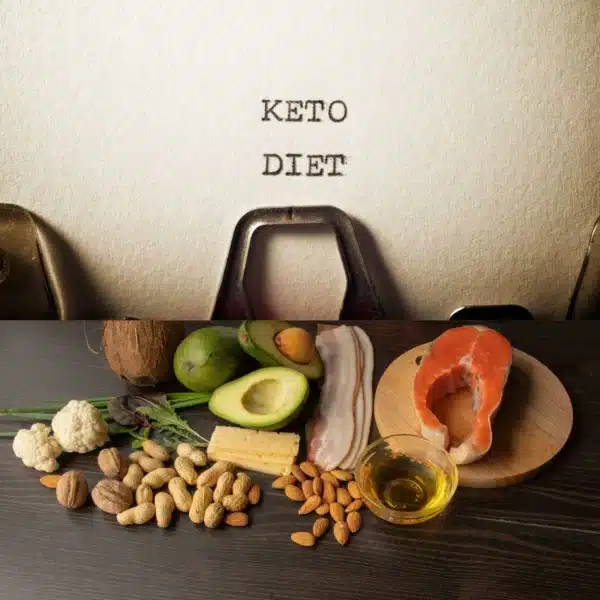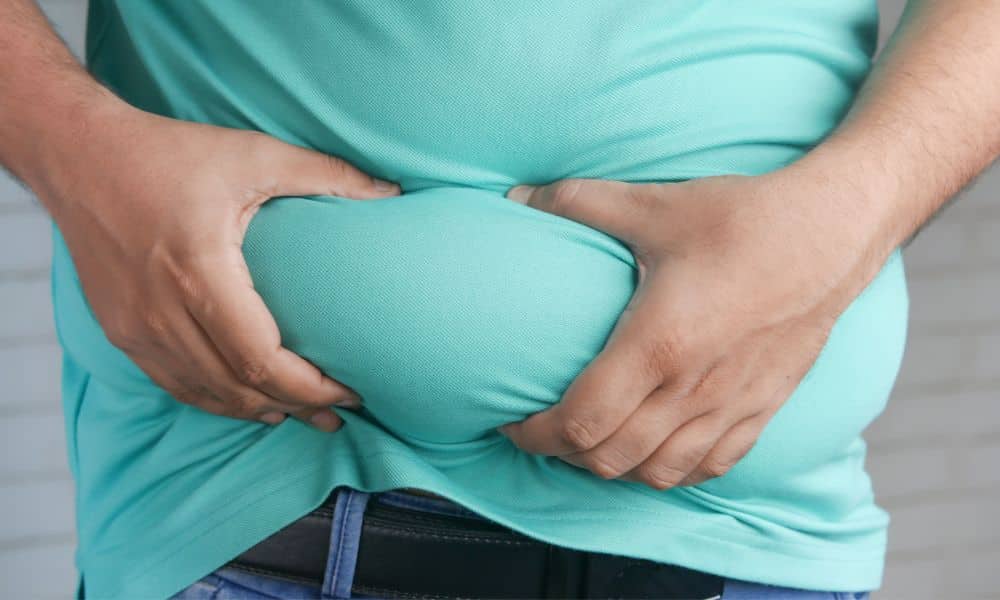What is the Ketosis process? If you have questions about the process of Ketosis, you have come to the right place to get answers. In today’s world, there are several types of food people eat. But unfortunately, with people rely on artificial diets because of the limited supply of fresh produce.
The average household diet has foods that are rich in fats and carbs. Most people find it easy to consume processed and unhealthy foods. But for others, eating healthy and nutritious foods is essential. To get the best results, they go on the Keto diet. It is one of the most popular diets to lose weight and get in shape.
For some, the Keto diet may seem like another fad, but try it after reviewing the reviews. Several fitness trainers and celebrities are showing off their weight loss success with the help of this diet. This is because the Keto diet causes the body to enter the Ketosis process.

Top 10 foods to start the process of Ketosis
- Avocados
- Eggs
- Meat, Poultry, and Seafood (i.e., Salmon, Chicken, Shrimp)
- Oil (i.e., Olive & Coconut)
- Nuts and Seeds (i.e., Almonds & Chia Seeds)
- Dark Chocolate (90% or higher Cocoa)
- Berries
- Green Vegetables
- Dairy (i.e., Cheese, Butter, and Cream)
- Garlic, Onion, and Other Allium Vegetables
What is the process of Ketosis?
The Keto diet works by creating ketones in the body. Ketosis is a process that occurs when your body lacks sugars to make energy. In its place, it burns fat tissue, making tiny components called ketones, which have other jobs in the metabolism.
Keto is a term you will see while searching for information on weight loss or diabetes. If you are wondering if it is good, it depends on its use. Keto is a new, low-carb plan for weight loss. It provides many support benefits for your body. Thus, it improves your health and fitness.
As mentioned earlier, Keto burns fat, making you feel less hungry in a short amount of time. It also helps with muscle building. Besides muscle building and rapid weight loss, Keto provides other health benefits. For example, it improves the health of heart patients. Keto does an outstanding job of causing weight loss in a natural and balanced way. It is tricky, but this article provides precise insight into what it is. Continue reading to find out some of the best benefits of the keto diet.
The history of the process of Ketosis
Fasting, exercising, and additional dietary schedules always helped people with weight control. So medical experts created the Keto diet to replicate fasting metabolism. Modern doctors used it to treat epilepsy in the 1920s. For about two decades, the Keto diet was the prevailing treatment method for epileptic patients.
However, introducing anti-epileptic drug techniques slowed the use of the Keto diet. By the end of the 20th century, it became less common. Doctors used Ketosis sparingly for a few children in hospitals. With time, Keto increased in popularity because of its scientific results for weight loss.
The metabolic details of the ketosis process
You can activate Keto by eating healthy, high-fat, low-carb natural foods. It can also happen during infancy, pregnancy, starvation, and fasting. To get to a Keto level, you must eat less than 200 calories (50 grams) of carbohydrates per day. The process involves restricting some foods from your diet, including candy, soft drinks, grains, and dairy products. You also must eat fewer fruits, potatoes, and legumes.
When you eat a diet with fewer carbs, your insulin level goes down. As a result, your body releases fatty acids from your fat reserves. Distinct types of fatty acids transfer to your liver, where oxidation takes place. In this biology process, the Ketosis process causes the creation of ketone bodies. Thus, the ketones provide energy for your body. As compared to fatty acids, ketones can cross the blood-brain barrier. Therefore, they can supplement the brain’s power without glucose. Once you have enough ketones in your blood, you enter a ketosis state.
According to different scientists, the number of Ketone bodies in your blood must be 0.5mmol/L of beta-hydroxybutyrate (BHB) or greater to enter a ketosis state. You need a combination of physical exercises and a high-fat and low-carbohydrate diet to reach Ketosis. Still, weight loss is only possible if you are eating the correct amount of carbs. The body prefers carbs over other sources of energy. It will not burn body fat as long as carbs are in your body. Keto is the healthiest way to eat and burn body fat quickly.
How does the ketosis process increase the brain’s activities?
The National Academy of Sciences recommends consuming at least 520 calories (130 grams) of carbs per day. However, it is a common misconception that your brain can function without carbs. Although many forms of carbs are not essential, your body cannot survive without glucose. For this reason, many health and fitness experts recommend green leafy vegetables, berries, and many other low-carb fruits and vegetables.
Some brain cells only use glucose for energy. A study, Some Aspects of Carbohydrate Metabolism in the Brain, in 1994, concluded the nervous system closely depends on glucose availability. The lack of it quickly causes syncope and death. The study also found that the exact role of glycogen in the brain is unclear. However, experts know that the brain becomes foggy when it does not get enough energy.
Carbs can, therefore, serve as an indicator of the level of brain activity.
The brain lacks fuel stores and hence requires a continuous supply of glucose. It consumes about 120 grams daily, an energy input of about 480 calories. The brain accounts for some 60% of glucose used by the body in a resting state. But a sizeable portion of the brain can also implement ketones for energy. Some examples can be starvation or when your diet is low in nutritional foods.
In fact, after just three days of not eating anything, the brain avails 25% of its energy from Ketones. The number goes up to 60% during long-term hunger. Thus, the human body develops a small amount of glucose the brain needs during Keto. We know this process as gluconeogenesis. Both gluconeogenesis and Keto can provide energy requirements for the brain. In short, the Keto diet requires a paltry amount of carbs for the brain.
How does the ketosis process differ from keto-acidosis?
People misunderstand Ketoacidosis and Ketosis processes. They often ask what Ketosis is and how it differs from other metabolic conditions. While Ketosis is a natural process that people achieve with the control of the metabolism, keto-acidosis is an ailment. It is a dangerous metabolic condition that can be detrimental without treatment.
In keto-acidosis, your blood contains higher volumes of ketones and an even higher volume of blood sugar. During this process, your blood gets acidic, which causes further complications.
Keto-acidosis takes place when an individual has uncontrolled type 1 diabetes. People with type 2 diabetes and alcohol abuse can also develop this condition, though it is not shared. Ketosis does not have any harmful side effects as keto-acidosis. While in Ketosis, your body does not go through any significant physiological changes that are life-threatening. Many people have mentioned that they feel more active in Ketosis.
How long does it take for the ketosis process to start?
Entering Ketosis by following the Keto diet is challenging. It is more than just a black-and-white thing. You can achieve a notable change but must follow multiple steps and techniques.
A presence of ketone bodies less than 0.5mmol/L of BHB signals you have not entered a state of Ketosis. However, it may mean that you are going to achieve success soon. Your body may not be at the maximum fat-depletion level. Nutritional Ketosis occurs between 0.5 – 3mmol/L of BHB. Once this happens, there is an impact on your metabolic conditions and weight distribution. Higher levels may also show a state of starvation, which is not suitable for your health.
Naturally, it takes about two days to a week for your body to reach Ketosis. However, with a high-fat, low-carb diet like the Keto diet, you can go into Ketosis much easier and faster.
Here are some signs and symptoms of the Ketosis
The Keto diet is a popular method of weight loss. It also improves your health with lifestyle modifications. If you follow your diet, this high-fat diet increases your ketone levels. Eventually, the cells and tissues of your body have an alternative energy source.
You note it will also provide unique health benefits. Once your body reaches a Keto diet level, it will undergo multiple biological changes. The changes include a decrease in insulin levels and a marked increase in fat depletion. Here are some everyday things and symptoms of Ketosis, both negative and positive.
One of the most unappealing factors of Ketosis is bad breath.
Once you reach an appropriate level of Ketosis, you may develop bad breath. It is common in most people that follow the Keto diet. For people consuming Keto products or similar diets, such as the Atkins diet, the breath becomes fruity and unsavory. The outcome of increased ketones in the body causes this odor. The specific element of the condition is acetone. It is a metabolic byproduct that leaves your body through your breath and urine.
You may feel bad that your breath smells terrible. But if you are trying to lose weight, this is a good sign. Many people following the Keto diet brush their teeth multiple times a day. They also use sugar-free gum to create fresh breath. Therefore, you must consider gum or other products, such as mints, you may use. In addition, when following the Keto diet, you should always check the label for carbohydrate levels. These may affect your blood sugar levels and kick you out of Ketosis.
One of the most significant byproducts of Ketosis is weight loss.
Another sign that your body has reached Ketosis is weight loss. Fat loss is precisely why the diet has gained popularity around the world. Keto diets and low-carb, high-protein diets are helpful for sustainable weight loss. They stop hunger and cravings, which results in the loss of appetite. Weight loss happens when you eat less and move more.
According to the information provided by multiple studies, you will go through both long- and short-term weight loss. Once you switch your diet to Keto foods, you notice that the additional pounds will fall off. It is normal to lose significant weight during the first week.
For some people, this is the loss of fat stored in carbs and water. After the weight loss, continue to burn excess fat consistently. If you stick with the diet and stay in a calorie deficit, you will reach your weight loss goals.
Research studies support the benefits of Ketosis.
A study, Nutritional Ketosis for Weight Management and Reversal of Metabolic Syndrome in 2018, found that Ketosis improves your metabolism, decreases hunger, increases satiety, fasting insulin and glucose levels, and aids in weight management. Subsequently, the study concluded that ketosis conditions promote the breakdown of excess fat stores.
Another massive benefit of Ketosis is a decrease in blood sugar levels.
One of the most prominent signs of reaching Ketosis is a decrease in sugar levels. An increase in ketones also occurs, as discussed earlier. As you maintain Ketosis, further metabolic changes happen. You will burn stubborn body fat as your primary source of energy.
If you want to check that your body is in Ketosis, the most accurate measurement is blood. You can check your ketone levels using a ketone meter to ensure your body reaches the desired weight loss. You can record changes in your blood by calculating the beta-hydroxybutyrate (BHB) levels in the blood. BHB is one of the essential elements present in the blood.
According to ketosis professionals, blood testing of ketone levels is the most accurate evaluation method. Researchers extensively use it. However, a significant drawback of this type of testing is that you need to give a blood sample. Testing kits can be expensive.
For this reason, most people typically perform the test once every two weeks. However, if you want to get your hands on a ketone meter, Amazon has a group of products available.
During Ketosis, ketones are visible in urine and breath.
Another ketosis symptom is ketones in the urine and breath. You can measure these levels with the help of a breath analyzer and urine tests. A breath analyzer monitors acetone, one of the three essential ketones present in the body. It provides you with a random idea of your ketone levels. Thus, you eliminate more acetone from your body if you go through Ketosis for nutrition.
Using an acetone breath analyzer is quick and easy. Thus, it is less accurate in comparison with blood testing. Another essential method to check ketosis symptoms is to estimate ketones’ abundance in your urine sample with specific showing strips. These tools are helpful and promising in assessing ketone loss through urine. Perhaps the slowest but most effective way to track the loss of ketones is through your weight. The mirror and the scale never lie.
One of the best features of Ketosis is a decrease in appetite.
Many people who follow the Keto diet report a suppression of hunger after a certain period. The reasons for this decline, scientists have yet discovered. Some scientists say you can reduce your appetite by eating more vegetables and protein. Your body’s hunger hormones are also changing, which tremendously affects your metabolism. The ketone levels may have a substantial impact on the brain to decrease appetite as well.
A study, Do Ketogenic Diets Suppress Appetite? A Systematic Review and Meta-Analysis in 2014 found that a Keto diet caused a decrease in appetite, despite weight loss. Thus, the study concluded that these absolute changes in appetite were small; they occurred within the context of energy restriction, which is known to increase appetite in heavier-weight people. Also, the scientific benefit of Ketosis credibly explains the suppression of appetite.
Ketosis also causes an increase in energy and focus.
Most people following Keto report tiredness, stress, or brain strain for the first few days of a low-carb diet. The term used for this condition is ‘Keto flu’ or the ‘low carb flu.’ However, those who have followed the diet regularly often mention enhanced energy and focus.
If you think your body is in Ketosis, you will notice being comfortable with a low-carb diet. Your body will gradually adapt to burning fat as fuel. When your body goes into Ketosis, a sizeable portion of the brain stimulates hormones to burn ketones. This process does not involve carbs. It may take a few days or even weeks to get familiar with the routine and have your body use fats.
Ketones are a critical fuel source for the brain. We have evaluated them in scientific labs to treat brain disorders and ailments like memory loss and concussion. For this reason, it is not surprising that people in Ketosis on a long-term basis often mention increased focus and a boost of energy.
Decreasing carb levels in the body can also help stabilize and control blood sugar. It can additionally increase focus and advance brain physiology. But, of course, it all depends on one question: how long it takes to get into Ketosis?

A short-term side effect of Ketosis is fatigue, but the body adapts fast.
The transformation to a Keto diet involves a significant shift for new dieters. In addition, most people complain about side effects such as fatigue, weakness, and other symptoms of ketosis.
The side effects are why people quit the diet before the primary results even appear. The side effects of Ketosis are natural and expected. After years and years of running on a heavy-carb routine, the body shuts down immediately. You are trying to adapt to an entirely new system, which can be challenging. Contrary to what you expect, the change will not happen overnight. Thus, you will go through some challenges. It usually takes about 7 to 30 days before your body adapts to Ketosis.
However, to decrease the stress and fatigue during this time, start on some supplements and electrolytes. People often ignore the importance of electrolytes. Because your body is low on carbs, the water content is also down. In addition, the elimination of processed food from your diet also removes some salt. Because of this reason, add some additional supplements to your diet. When adding supplements to reduce fatigue, follow your doctor’s advice. Try to get about 1000 mg of potassium and 300 mg of magnesium daily.
Ketosis can cause a performance decline, which explains why athletes prefer Targeted Keto.
As mentioned, going off carbs during Ketosis can cause general fatigue and tiredness. In addition, it involves an extreme reduction in performing exercises or other activities. Another cause of the condition is a decrease in muscle glycogen stores. These stores are the leading and most significant energy sources during a workout session.
After several days, many Keto dieters return to their expected performance levels. In times of workouts and sports, a Targeted Keto diet can help. However, if your goal is to lose weight, you will want to be in Ketosis during calorie-burning activities. If you are wondering, how long does it take before your physical performance improves in Ketosis? The answer is not that long!
According to popular research, multiple athletes who have switched to a Keto diet shed 230% more fat. The success ratio was higher when compared with those who did not follow the Keto diet. Though it is not likely that a Keto diet can affect performance long-term, you will feel some impact. It can maximize your energy levels. The fruits and vegetables you consume should be enough for recreational sports and working out.
Ketosis can also cause some digestive problems.
Ketosis induces significant changes in your lifestyle. People consume foods they have never eaten or dislike on the Keto diet. In addition, it can cause multiple digestive issues, such as diarrhea and constipation. Some of the other side effects include heartburn and regurgitation.
After the transition period, many of the problems resolve. But it is essential to know the group of foods that are causing digestive complications. You also need to know about healthy, low-carb vegetable product consumption. These foods are rich in fiber and vitamins for your stomach and intestinal health. Natural and not processed foods guarantee healthy nutritional foods that improve your health. Eating raw foods prevents digestive complications and nutritional deficiencies. Your body and nature talk to and understand each other.
Another disadvantage that Ketosis creates is insomnia.
One major issue for several Keto dieters is getting proper sleep. Because of this reason, it is one of the most acute symptoms. People in ketosis mention insomnia when they cut down on carbohydrates. However, the condition and sleeplessness improve in a few days. For many long-term dieters, the diet helps with their sleeping schedule. They report less stress and fatigue after sleeping.
Here are some significant benefits of Ketosis.
The Keto diet is a famous weight loss routine supported and appreciated by many nutritionists and physicians. Many scientists have found that the diet results in significant weight loss compared to low-fat diet plans. One research mentioned that you could lose about 2.2 times more weight with Ketosis than with any other diet routine.
There is more to it! Most people feel fuller and less hungry within a short amount of time. Unfortunately, the experts do not talk about this aspect of Ketosis that often. For this reason, it is usually not that important to count calories with this diet.
There are some other essential health benefits. They are continually being reviewed and studied as a treatment for a group of conditions.
Ketosis decreases the chance of heart disease.
Decreasing the intake of carbs to approach Ketosis can reduce the risk of heart disease. It can prevent individuals from several cardiovascular and respiratory infections as well. In addition, risk factors such as total cholesterol, HDL cholesterol, and blood triglycerides significantly subside if you are on a low-carb diet.
Ketosis controls blood sugar levels, minimizing Diabetes Type 2.
Ketosis may improvise sensitivity to insulin in a group of people by 75%. As a result, some diabetic individuals can reduce their medication or even stop taking external insulin. Ketosis controls blood sugar by limiting the number of carbs in the body.
Ketosis also shows signs of reducing metabolic complications.
It can improve metabolic syndrome symptoms, including additional body fat, high triglycerides, and increased blood pressure.
Ketosis reduces the risk of some forms of cancer decrease dramatically.
Since Ketosis involves the depletion of carbs, toxins and free radicals get eliminated. This diet routine supports cancer therapy by starving cancer cells. There is no glucose present for their metabolism, which stops tumor growth.
Ketosis lowers the risk of mental disorders.
Ketosis has substantial benefits for patients with Alzheimer’s or Parkinson’s disease. The research found that these mental conditions improve after a month of starting the diet. In addition, the world health organization found that many of the leading terminal brain, heart, and liver diseases are prevalent in western countries where processed food and drinks are rampant. The Keto diet promotes healthy natural foods and prohibits processed foods and beverages loaded with bad carbohydrates and chemicals.
Here are some tips for entering and staying in Ketosis
We have covered everything about Ketosis and how long it takes to get into Ketosis. Still, it is essential to know about some crucial pointers. There are a couple of ways through which you can get into Ketosis safely and effectively.
- You should reduce your carb intake to 200 calories (50 grams). Although you will not need to be that strict, eating less than 50 grams daily will ensure you achieve your desired weight.
- Try out intermittent fasting. You can go without eating for 16 to 18 hours, which helps to reach Keto quicker. It is easy to pull off by skipping two meals. These steps will eventually feel natural.
- You can consume as many healthy fats as you like. However, consuming natural and healthy products is essential. For example, you cannot eat French fries or deep-fried chicken because it is still harmful to your health.
Bonus information on Ketosis
Cooking with coconut or olive oil is the best. Besides being a natural healthy fat that remains stable at higher temperatures, coconut oil has medium-chain fatty acids that can improve ketone production. In addition, it provides tons of other health benefits.
- Exercising, in combination with the Keto diet, is exceptionally useful. You may feel stressed out and tired during the transition, but it will improve with time. Also, going for a brisk walk may help you get into better shape.
- Multiple conditions require medical supervision and control during Ketosis. The requirements include diabetes types 1 and 2, high blood pressure, kidney or liver disease, pregnancy, and gastric disorders.
- If you are breastfeeding or have other metabolic conditions, check with your physician before starting a Keto diet. If your body uses ketones appropriately, you will not have any difficulties digesting fats.
- You must be patient! Increasing your physical activity and eating healthy for the first few weeks will be optimally helpful.
Do the benefits of Ketosis outweigh the side effects?
In conclusion, Ketosis is a metabolic state that anyone can achieve with the right foods. By following the Keto diet and working out, anyone can get the benefits in a short amount of time. Several people have used Ketosis and gained immense benefits from it.
Ketosis has a wide variety of benefits, including lowering blood sugar, weight loss, muscle growth, and improved health and fitness. However, following the Keto diet without the correct information can confuse and challenge at the beginning. Some people have experienced adverse effects from carb deprivation. Ketosis symptoms are intense when you don’t follow the Keto diet correctly.
Therefore, the Keto diet may not suit everyone. Working with your doctor, fitness trainer, or nutritionist can eliminate many complications. We hope you find this review helpful and try the Keto diet to start Ketosis. If you or someone you know is considering weight loss, share this article on Facebook or Twitter so that others can learn more about losing weight.




